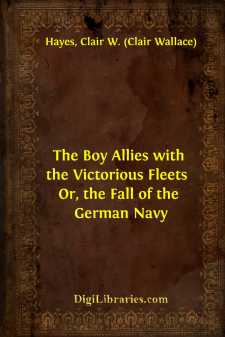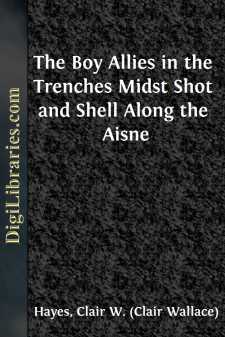Categories
- Antiques & Collectibles 13
- Architecture 36
- Art 48
- Bibles 22
- Biography & Autobiography 813
- Body, Mind & Spirit 142
- Business & Economics 28
- Children's Books 15
- Children's Fiction 12
- Computers 4
- Cooking 94
- Crafts & Hobbies 4
- Drama 346
- Education 46
- Family & Relationships 57
- Fiction 11828
- Games 19
- Gardening 17
- Health & Fitness 34
- History 1377
- House & Home 1
- Humor 147
- Juvenile Fiction 1873
- Juvenile Nonfiction 202
- Language Arts & Disciplines 88
- Law 16
- Literary Collections 686
- Literary Criticism 179
- Mathematics 13
- Medical 41
- Music 40
- Nature 179
- Non-Classifiable 1768
- Performing Arts 7
- Periodicals 1453
- Philosophy 64
- Photography 2
- Poetry 896
- Political Science 203
- Psychology 42
- Reference 154
- Religion 513
- Science 126
- Self-Help 84
- Social Science 81
- Sports & Recreation 34
- Study Aids 3
- Technology & Engineering 59
- Transportation 23
- Travel 463
- True Crime 29
The Boy Allies at Jutland
Description:
Excerpt
CHAPTER I
H.M.S. "QUEEN MARY"
A great, long, gray shape moved swiftly through the waters of the Thames. Smoke, pouring from three different points in the middle of this great shape, ascended, straight in the air some distance, then, caught by the wind, drifted westward.
It was growing dark. Several hours before, this ocean greyhoundвÐâone of Great Britain's monster sea-fightersвÐâhad up-anchored and left her dockвÐâwhere she had been undergoing slight repairsвÐâheading eastward down the river.
Men lined the rails of the monster ship. These were her crewвÐâor some of her crew, to be exactвÐâfor the others were engaged in duties that prevented them from waving to the crowds that thronged the shoreвÐâas did the men on deck.
Sharp orders carried across the water to the ears of those on shore. The officers were issuing commands. Men left the rail and disappeared from the view of the spectators as they hurried to perform their duties. Came several sharp blasts of the vessel's siren; a moment later her speed increased and as she slid easily through the waters of the river, a cheer went up from both shores.
The crowd strained its eyes. Far down the river now the giant battleship was disappearing from the sight of the men and women who lined the banks. In vain, a few moments later, did many eyes try to pierce the darkness. The battleship was lost to sight.
The vessel that had thus passed down the Thames was H. M. S. Queen Mary, one of the most formidable of England's sea fighters. It was with such ships as the Queen Mary, supported by smaller and less powerful craft, that Great Britain, for almost two years of the great war, had maintained her supremacy of the seas.
This great ship was new in service, having been completed only a few years before the outbreak of the war. She was constructed at a cost of $10,000,000. She was 720 feet long, of 27,000 tons burden and had a complement of almost 1,000 men. For fighting purposes she was equipped with all that was modern.
In her forward turret she carried a battery of six 16-inch guns. Aft, the turret was similarly equipped. Also the Queen Mary mounted other big guns and rapid firers. She was equipped with an even half-dozen 12-inch torpedo tubes. She was one of the biggest ships of war that roved the seas.
The Queen Mary was one of the fleet of battleships that had patrolled the North Sea since the outbreak of hostilities. Already she had seen her share of fighting, for she had led more than one attack upon the enemy when the Germans had mustered up courage enough to leave the safety of the great fortress of Heligoland, where the main German high sea fleet was quartered.
It had been in a skirmish with one of these venturesome enemy vessels that the Queen Mary had received injuries that necessitated her going into dry dock for a few days, while she was given an overhauling and her wounds healed. True enough, she had sent the foe to the bottom; but with a last dying shot, the Germans had put a shell aboard the Queen Mary.
Her damage repaired, the Queen Mary was now steaming to the open waters of the North Sea, where she would again take up patrol duty with the other vessels that comprised the British North Sea fleet, under command of Vice-Admiral Beatty, whose flagship, the Lion, had taken up the additional burden of patrolling the Queen Mary's territory while the latter was being overhauled....












